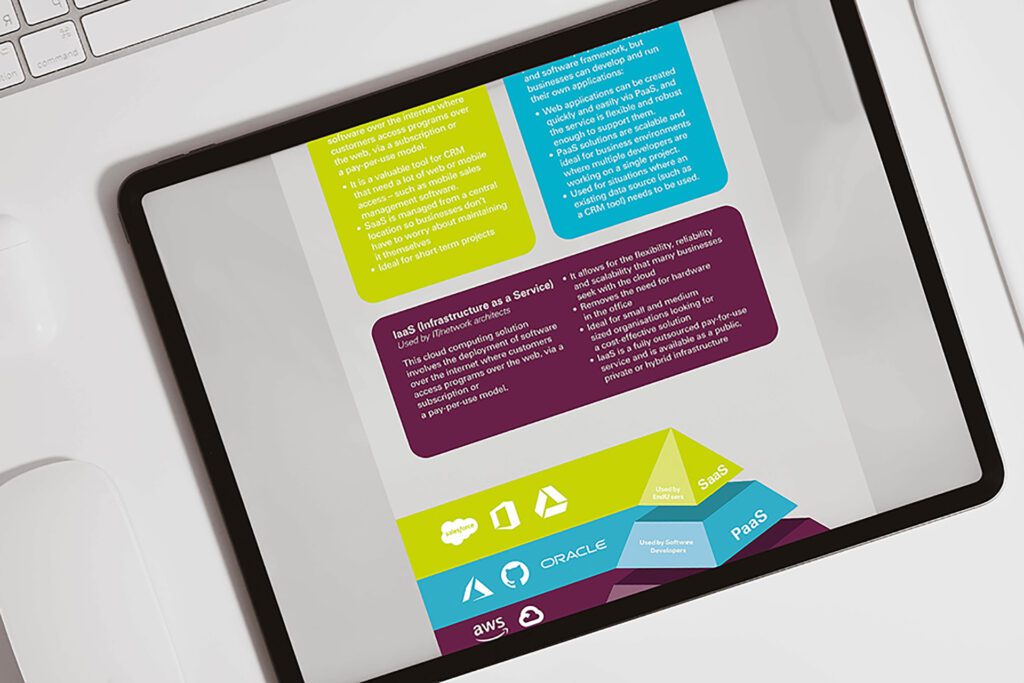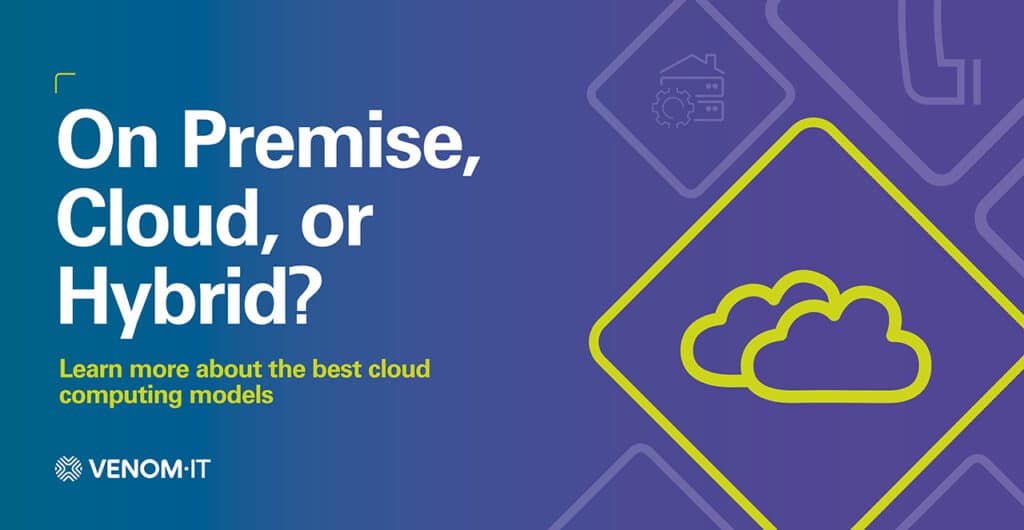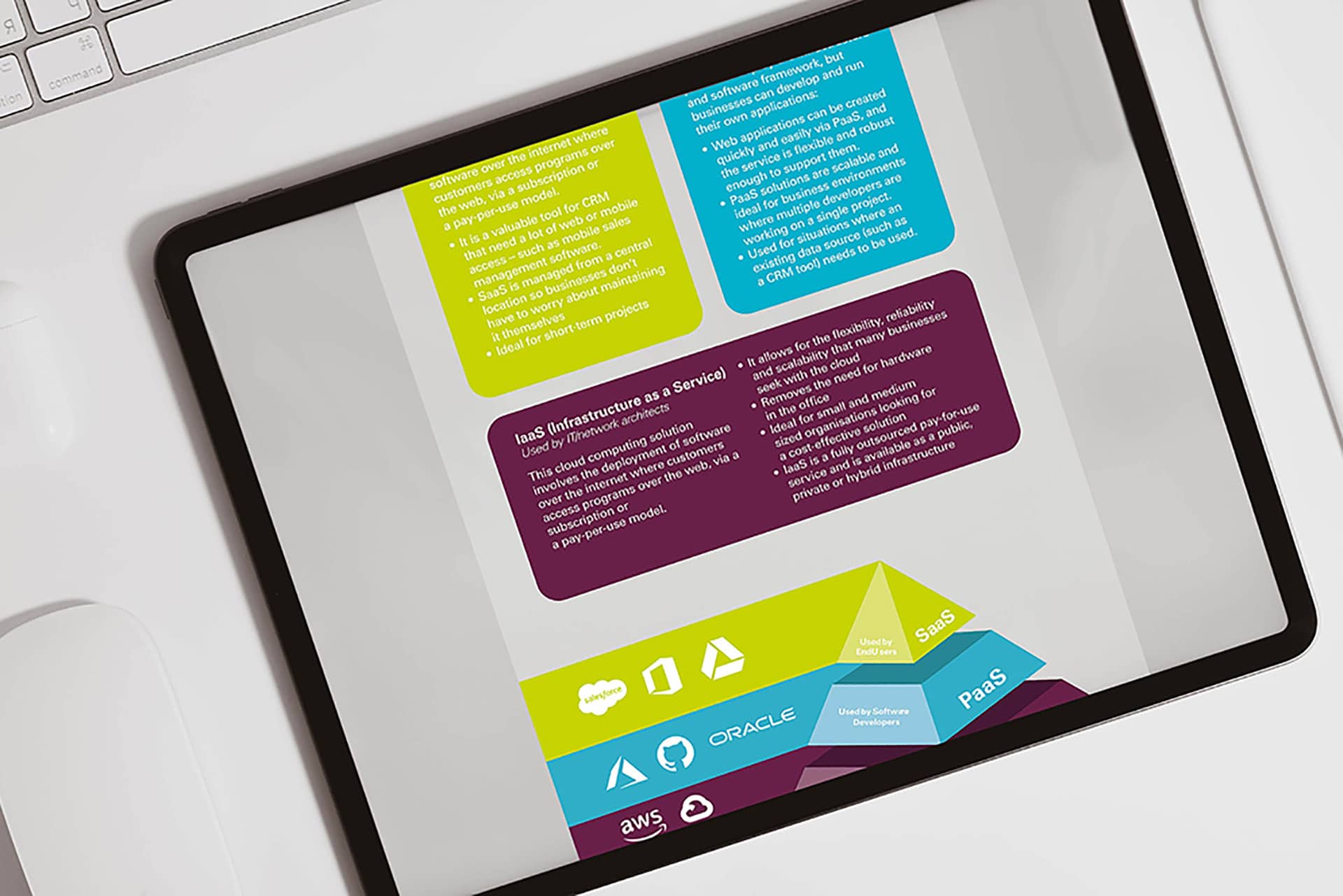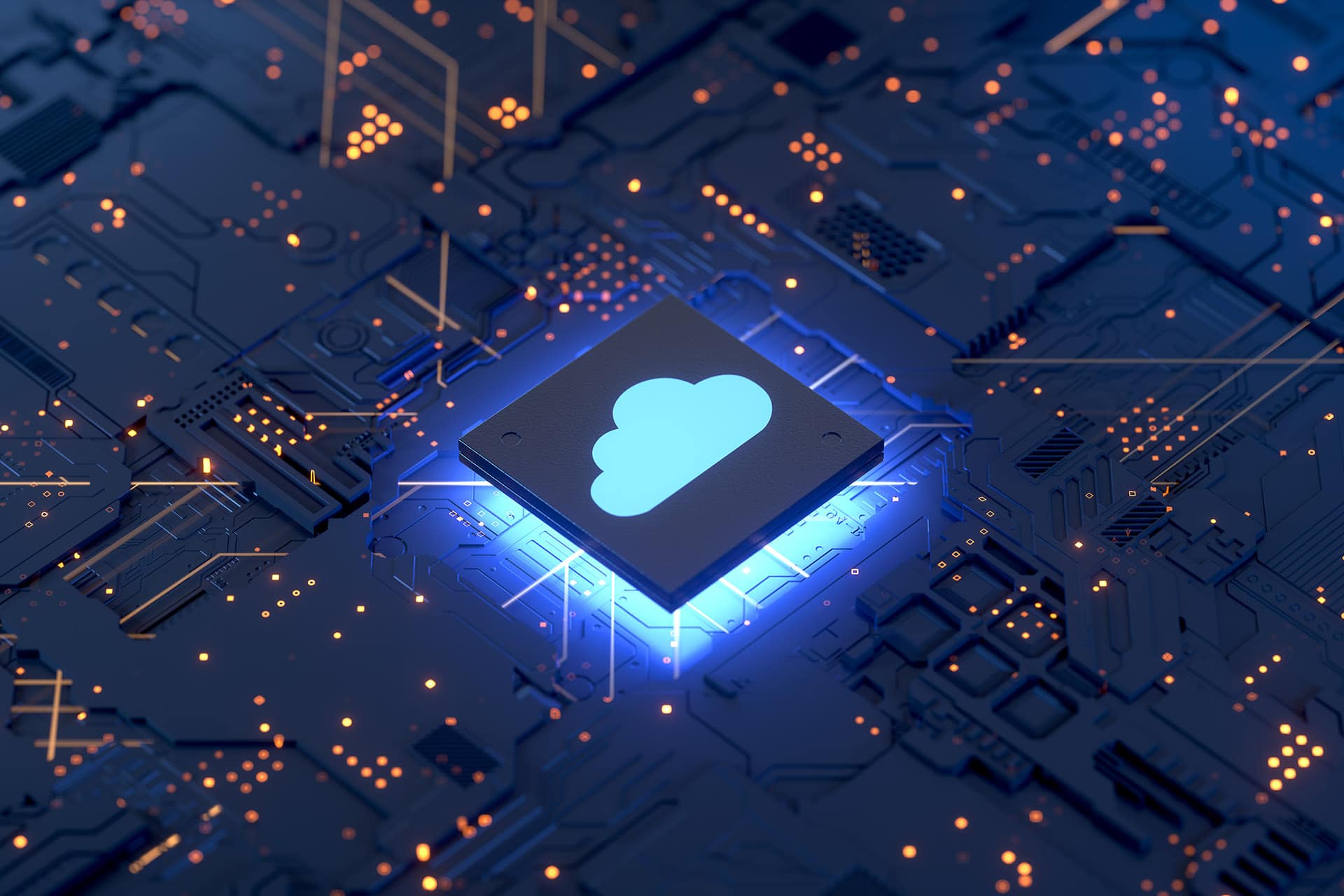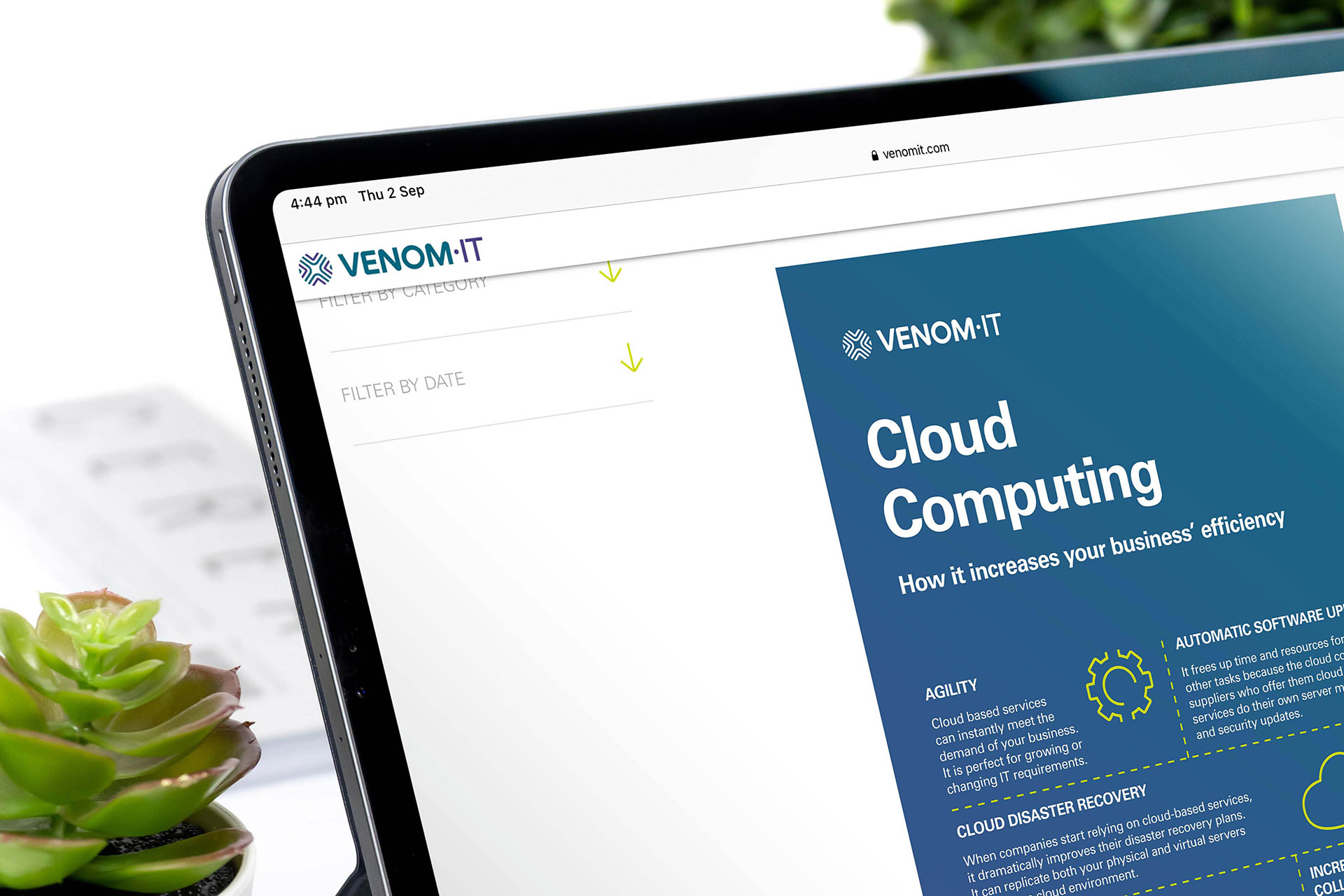Cloud Computing
Guide
a provider that offers Cloud Services across
all Cloud Platforms – Venom IT Manchester
So, what is cloud computing?
Put simply, cloud computing is a broad term for storing and accessing data via internet services that are external to your computer’s hard drive. Cloud providers deliver on-demand computing services on a pay-as-you-go basis. It stores files in external data centres via the internet rather than on your local devices.
As companies expand, the requirements of their operating systems develop with them. Perhaps you need more file storage, new safety measures need to be implemented or maybe your systems are outdated. Of course, you can purchase more servers and buy new software and hardware. However, these decisions can be costly, overly technical and generally a bit of a hassle.
The unpredictability of demand could mean you spend way too much money on hardware for storage that you simply don’t need. Installing new operating systems, hardware and software can also be incredibly time-consuming for companies with smaller workforces. Think about your current team. Do any of them have the capabilities or time to maintain an operating system?
This is where cloud services can eliminate these risks and setbacks. Businesses enjoy the benefits of having an IT infrastructure without any of the associated upfront costs and maintenance requirements.
Not sure how much storage space you need? No problem! Just pay for what you use. Your team doesn’t have the IT knowledge to manage your data securely? Don’t worry about it and let the professionals sort that out for you. The only thing you really need to concern yourself with is what type of cloud-based software is most appropriate for your business.
What method of cloud computing should I choose?
We’ve said it before, and we’ll say it again: the word ‘cloud’ is thrown around too much these days. We use it to describe operating systems, computing infrastructures, servers, service models and storage.
On top of this, specific brands use ‘cloud’ in their product names. These products are then broken down into three categories: ‘hybrid clouds’, ‘public clouds’, or ‘private clouds.’
It’s great that cloud platforms offer a vast array of options to cater to a host of requirements but too many choices can be counter-productive. Analysis paralysis. With a whole buffet of options to choose from, how do you decide where to start?
Let us break it down for you.
What are the main service points for cloud computing?
There are four major service models to choose from: Infrastructure as a Service (IaaS), Platform as a Service (PaaS), Backend as a Service (Baas), and Software as a Service (SaaS).
We’ve outlined the key points in a nice little infographic:
Infographic: What are the main service points of cloud computing?
The main points are as follows:
Infrastructure as a Service (IaaS)
IaaS is the basic model.
IaaS offers you the standard infrastructure of virtual servers, a network, operating systems, and data storage drives.
No more bulky hard drives taking up space in your office – data storage drives are remotely held in the offices of your cloud host. What will you do with all this free space? We’ve heard company games rooms are good for morale. Get an air hockey table and thank us later.
IaaS is a cost-effective, fully outsourced, pay-per-use service available as a public, private, or hybrid infrastructure. (We’ll get on to what this means later).
Providers include Microsoft Azure, Amazon Web Services and Google Compute Engine.
Platform as a Service (PaaS)
PaaS meets you halfway.
Your provider offers you the infrastructure and the software, and you get to develop your own applications.
PaaS allows multiple employees to work on a project at the same time. It’s ideal for workplaces in which collaboration is common, such as software development.
Web applications and developmental tools can be used whenever you need them. You can adapt and modify your cloud system to suit the changing needs of your business.
Providers include Microsoft Azure, Google, Apache Stratos, GitHub and Oracle.
Backend as a Service (BaaS)
Getting a little more complicated now.
With a BaaS cloud service model, your cloud host works behind the scenes to outsource all of your software. This might include database management resources, cloud storage systems, web hosting platforms and user authentication features etc.
This frees up your time to work on the front facing parts of the build. Examples here include the user interface, specific algorithms and databases needed for your clients.
Mobile Backend as a Service (MBaaS) takes this one step further, enabling you to build mobile apps in addition to all of the above.
Providers include Amazon Web Services, Back4App, Parse and Firebase.
Software as a Service (SaaS)
SaaS is your go-to.
SaaS offers fully developed software solutions available on a subscription basis. You can dip in and out and only pay for what you use.
SaaS is maintained entirely by your cloud host, so you don’t need to worry about security, data management or anything really.
The flexibility offered by SaaS makes it ideal for short term tasks or companies that work on a variety of different projects.
Providers include Microsoft Office 365, Google and Cisco Webex.
On Premises, Cloud, or Hybrid?
On premise set-ups take up a lot of space, are expensive to power, less flexible and are difficult to scale up or down. Infrastructure and maintenance costs are all down to you and it’s complicated to make changes, once the system has been installed.
Cloud systems, on the other hand, allow you to pay for what you use so you can scale up or down easily and quickly, whenever necessary. Hardware and software maintenance jobs are also offloaded to the cloud provider. They make sure everything’s ticking over in the background. You don’t need to worry about repetitive update notifications, hardware replacements or malfunction costs.
Hybrid models combine these systems – some data is stored in house and some is cloud-based. What goes where largely depends on the nature of the content.
We’ve written about this further here, in our dedicated article about virtual storage:
Could virtual storage allow you to better manage your business?
What is the difference between a public cloud and a private cloud?
Companies dealing with sensitive information tend to opt for a private cloud system. All data is securely stored and backed up in a data centre. The private system ensures that all employees are working from the same documents and can instantly access relevant information. Private clouds can be customised but this tailoring requires substantial IT expertise.
Unless you have a team of tech wizards at your disposal, this can end up being quite expensive. While public clouds are cheaper, they don’t offer the same levels of security as private computing resources.
Control is relinquished to cloud service providers, such as Amazon Web Services or Microsoft Azure, making customisation less feasible. On the plus side, the global reach of public clouds means that resources can be accessed from anywhere.
For larger companies with an international spread, this makes information exchange a breeze. As with on premises vs cloud server systems, hybrids combine the two. In a post-pandemic era of working from home, this is usually the best course of action to take. Sensitive information is protected, while important resources are still accessible from anywhere.
Cloud computing security
Providers of cloud-based services take the time to ensure that your data is protected – both physically and through traditional software-based safety measures.
In the event of a data loss for an on premise server, recovery is highly unlikely. Cloud systems have robust disaster recovery systems in place to ensure that lost data can be quickly and easily retrieved.
Business case for cloud computing
Our business case infographic concisely outlines the benefits of incorporating cloud into your business models. Cloud computing optimises efficiency, offers comprehensive disaster recovery back-ups, provides additional security, and automatically updates software.
It really is a no-brainer. See for yourself:
Cloud storage solutions
Depending on the size of your business and the level of storage you need, there are a range of different cloud storage solutions available. We’ve listed a few options below, but would always recommend speaking to an expert about which is right for you. That way you can avoid paying too much for something you don’t need, or needing something that you don’t have.
Cloud storage providers include:
Amazon Web Services (AWS)
Microsoft Azure
Citrix
Google Drive
iDrive
To help you understand the differences, we’ve also written a few comparative articles to help you get into that ‘pros and cons’ mindset:
Google One vs Google Workspace
OneDrive vs Amazon Drive Cloud Storage for Business
Citrix vs Azure
Cloud computing migration
Taking the plunge and making the transition to the cloud is the most difficult (and scary) part of the process. It’s plain sailing once you’re done but the early days are somewhat shaky as you set up your new system and try to figure it out.
If all the above is way over your head then you have two choices.
- You can continue to browse online resources, read articles such as this one and educate yourself on the different systems available to you.
By using a cloud hosting service (hi) you can take the stress out of your company’s migration altogether. - Our tech specialists work with you to assess your needs and determine exactly what system would work best. We then establish and implement these systems for you, making your transition seamless.
Our support team is on hand to help with any query, from ‘where’s the save button’ to the big questions. (We hope you know where the save button is by now but you really can come to us about anything). We’ll secure your IT infrastructure and optimise your processes. Maximum efficiency with minimal effort on your part.
The future of cloud computing
As cloud-based corporations continue to expand, it might feel difficult to know where the future of cloud will lead. Thanks to the pandemic, our transition towards working from home has made cloud-based systems the norm. This has resulted in better storage capacity, enhanced security and increased access to software. Frankly, there really has been no better time to future-proof your business methods and elevate your company’s efficiency.
We’re here to help when you’re ready to seize this opportunity.

